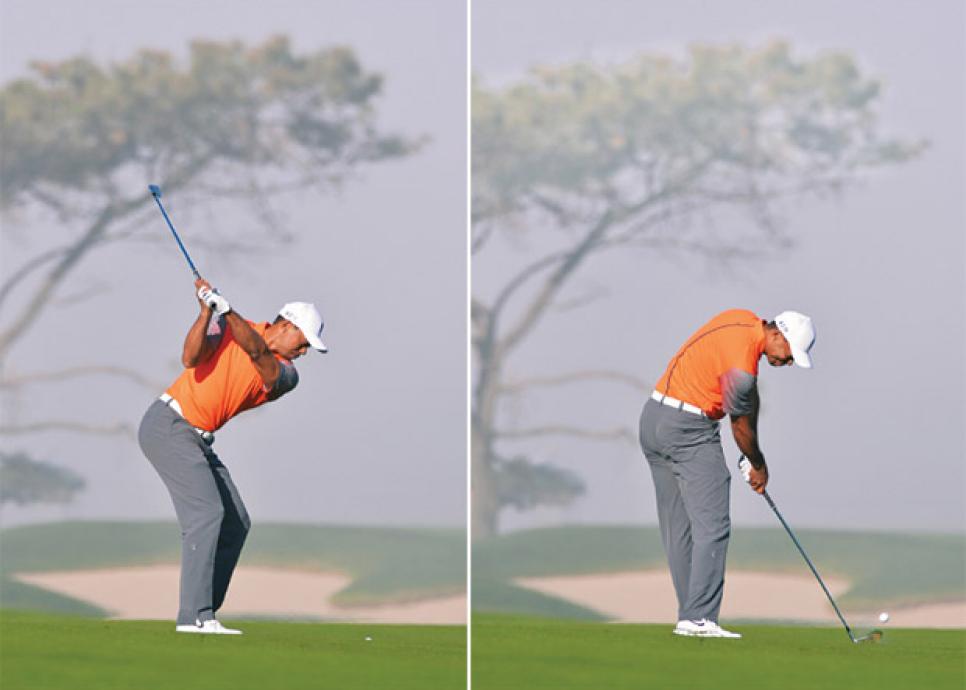Instruction
Sean Foley: The Secret To Lower Scores

I can't blame the late South African pro Bobby Locke for thinking you "drive for show and putt for dough." The four-time British Open champ didn't have the statistical analysis we do today. After poring over data from Columbia Business School professor and golf analyst Mark Broadie, I'm convinced the real secret to scoring is consistent iron play.
In 2013, Tiger Woods picked up an average of 1.64 strokes per round on PGA Tour fields with his approach shots, Broadie's research reveals. Known as "strokes gained from approach shots," the stat determines how many strokes a golfer gains on the field from any full-swing distance outside 99 yards (excluding tee balls on par 4s and par 5s). Tiger got the ball in the cup in 6.6 fewer shots than the field average each tournament because he was puring it with his irons. He actually picked up 2.54 strokes per round overall (tops on tour for golfers who played a minimum of 40 rounds), but 65 percent of his scoring advantage came from his approach shots.
Most of Tiger's approaches were between 125 yards and 200 yards, and his average leave distance from that zone was 23 feet, eight inches. When your average is less than eight paces from the cup, consider how many of those shots must have wound up in kick-in range. It's no wonder he won five times in only 16 tour starts in 2013. And it's a shame that severe back pain and the ensuing surgery have sidelined him for most of the first half of this year. He might have won five more tournaments by now. So what makes Tiger so good with the irons? Here are three things to copy that you can see in these photos.
1. PREPARE YOUR HANDS FOR IMPACT
At the top of the swing, if your left wrist is flat and your right wrist is bent, they're in position to compress the ball. If youar hands aren't in these positions, you've got a fraction of a second to get them there on the downswing. Good luck with that.
2. STEEPEN YOUR ANGLE OF ATTACK
Most amateurs don't hit down on the ball enough with their irons, so their ball-striking is poor. To steepen your downswing, let your weight shift to your rear foot on the backswing but keep your upper body and head stacked above the ball's position—no swaying. Then, when you start down, shift your weight to your front foot and rotate your body in place, without lunging toward the target.
3. GET YOUR BODY OUT OF THE WAY
Everybody talks about the lower body rotating toward the target on the downswing, but your torso should, too. Otherwise your body will physically get in the way of your swing. Your trunk shouldn't be as open as your lower body at impact, but it should be moving in the same direction. Don't hold it back.